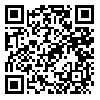Volume 34, Issue 2 (7-2025)
JGUMS 2025, 34(2): 192-209 |
Back to browse issues page
Research code: 000
Ethics code: IR.GUMS.REC.1398.459
Clinical trials code: 0
Download citation:
BibTeX | RIS | EndNote | Medlars | ProCite | Reference Manager | RefWorks
Send citation to:



BibTeX | RIS | EndNote | Medlars | ProCite | Reference Manager | RefWorks
Send citation to:
Zohrevandi B, Azizzade Dobakhshari M, Zia Ziabari S M, Kazemnejhad-Leili E, Saberi J, Rimaz S. Evaluating Serum Lactate and Base Deficit as Predictive Tools for Mortality in Patients With Burns of 20% or Greater. JGUMS 2025; 34 (2) :192-209
URL: http://journal.gums.ac.ir/article-1-2731-en.html
URL: http://journal.gums.ac.ir/article-1-2731-en.html
Behzad Zohrevandi1 
 , Mahan Azizzade Dobakhshari2
, Mahan Azizzade Dobakhshari2 
 , Seyyed Mahdi Zia Ziabari3
, Seyyed Mahdi Zia Ziabari3 
 , Ehsan Kazemnejhad-Leili2
, Ehsan Kazemnejhad-Leili2 
 , Jafar Saberi4
, Jafar Saberi4 
 , Siamak Rimaz *5
, Siamak Rimaz *5 


 , Mahan Azizzade Dobakhshari2
, Mahan Azizzade Dobakhshari2 
 , Seyyed Mahdi Zia Ziabari3
, Seyyed Mahdi Zia Ziabari3 
 , Ehsan Kazemnejhad-Leili2
, Ehsan Kazemnejhad-Leili2 
 , Jafar Saberi4
, Jafar Saberi4 
 , Siamak Rimaz *5
, Siamak Rimaz *5 

1- Department of Emergency Medicine, Road Trauma Research Center, School of Medicine, Poursina Hospital, Guilan University of Medical Sciences, Rasht, Iran.
2- Urology Research Center, Guilan University of Medical Sciences, Rasht, Iran.
3- Department of Emergency Medicine, School of Medicine, Guilan University of Medical Sciences, Rasht, Iran.
4- Clinical Research Development, Poursina Hospital, Guilan University of Medical Sciences, Rasht, Iran.
5- Department of Anesthesiology, Anesthesia Research Center, School of Medicine, Al-Zahra Hospital, Guilan University of Medical Sciences, Rasht, Iran.
2- Urology Research Center, Guilan University of Medical Sciences, Rasht, Iran.
3- Department of Emergency Medicine, School of Medicine, Guilan University of Medical Sciences, Rasht, Iran.
4- Clinical Research Development, Poursina Hospital, Guilan University of Medical Sciences, Rasht, Iran.
5- Department of Anesthesiology, Anesthesia Research Center, School of Medicine, Al-Zahra Hospital, Guilan University of Medical Sciences, Rasht, Iran.
Abstract: (851 Views)
Background In recent years, plasma base deficit (BD) has gained attention as a suitable marker for evaluating blood flow and predicting outcomes in burn patients. Accordingly.
Objective This study aims to evaluate the utility of serum lactate and base deficit as prognostic markers for mortality in burn-injured patients.
Methods This analytical cross-sectional study was conducted on 389 patients with burns of 20% or more. Blood samples were collected to measure BD and serum lactate levels, repeated every 12 h during the first 48 h of hospitalization. Demographic information and hospitalization details were recorded in a collection form, and all data were entered into the SPSS software, version 21, for statistical analysis.
Results The average age of the patients was 32 years and most of them were male. Serum lactate levels were significantly higher in deceased patients compared to those who improved (P<0.001) and BD was significantly lower in the deceased group (P<0.001). The best cutoff points for serum lactate at the third hour were 4.5, with a sensitivity of 96.9% and specificity of 95%. For bicarbonate at the second hour, the cutoff was -3.25, with a specificity of 96% and sensitivity of 94%. On the second day, the cutoff for bicarbonate was 4.5, with a sensitivity of 98.6% and specificity of 87%.
Conclusion Measuring BD and serum lactate levels can be valuable tools in the assessment and management of burn patients. Additionally, the determined cutoff points for BD may be useful in triaging burn patients.
Objective This study aims to evaluate the utility of serum lactate and base deficit as prognostic markers for mortality in burn-injured patients.
Methods This analytical cross-sectional study was conducted on 389 patients with burns of 20% or more. Blood samples were collected to measure BD and serum lactate levels, repeated every 12 h during the first 48 h of hospitalization. Demographic information and hospitalization details were recorded in a collection form, and all data were entered into the SPSS software, version 21, for statistical analysis.
Results The average age of the patients was 32 years and most of them were male. Serum lactate levels were significantly higher in deceased patients compared to those who improved (P<0.001) and BD was significantly lower in the deceased group (P<0.001). The best cutoff points for serum lactate at the third hour were 4.5, with a sensitivity of 96.9% and specificity of 95%. For bicarbonate at the second hour, the cutoff was -3.25, with a specificity of 96% and sensitivity of 94%. On the second day, the cutoff for bicarbonate was 4.5, with a sensitivity of 98.6% and specificity of 87%.
Conclusion Measuring BD and serum lactate levels can be valuable tools in the assessment and management of burn patients. Additionally, the determined cutoff points for BD may be useful in triaging burn patients.
Review Paper: Research |
Subject:
General
Received: 2024/10/2 | Accepted: 2025/01/21 | Published: 2025/07/1
Received: 2024/10/2 | Accepted: 2025/01/21 | Published: 2025/07/1
| Rights and permissions | |
 |
This work is licensed under a Creative Commons Attribution-NonCommercial 4.0 International License. |






